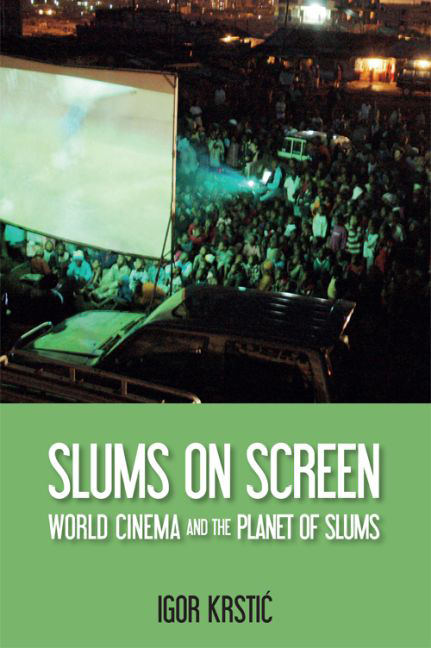Book contents
- Frontmatter
- Contents
- List of Figures
- Acknowledgements
- Introduction
- 1 Slums on and off Screen
- Part One Global Currents
- 2 Sensational Remediations
- 3 Documentary Mappings
- 4 Neorealist Narratives
- 5 Third Docufictions
- 6 Postmodern Bricolages
- 7 Digital Realisms
- Part Two Local Expressions
- Conclusion
- Bibliography
- Index
3 - Documentary Mappings
from Part One - Global Currents
- Frontmatter
- Contents
- List of Figures
- Acknowledgements
- Introduction
- 1 Slums on and off Screen
- Part One Global Currents
- 2 Sensational Remediations
- 3 Documentary Mappings
- 4 Neorealist Narratives
- 5 Third Docufictions
- 6 Postmodern Bricolages
- 7 Digital Realisms
- Part Two Local Expressions
- Conclusion
- Bibliography
- Index
Summary
Documentary creates its own cognitive map of the world …
Michael ChananA plain title card informs us about the film's directors, cameraman and sound recordist, while a restrained, elderly voice explains its general topic from off-screen: ‘A great deal these days is written about the slums. This film is going to introduce you to some of the people really concerned’. As if to emphasise that even though the topic is an old one, and the way it is presented here is supposedly different and new, the narrator's restrained voice opens the film with a reference to the written word, perhaps referring to recent sociological studies or newspaper articles. This prosaic introduction continues with a similarly neutral opening image, suggesting that we are entering here a world of hard facts and objective knowledge (or are we?). A simple fade-out to a black screen is followed by a fade-in to an establishing wide shot from a rooftop. It provides an almost comprehensive view of Stepney – a working-class neighbourhood in London. The camera's elevated position suggests that we can observe (and also judge?) those living below from a safe distance. ‘Down there’ we see a street that leads up to a church. At the opposite side of the frame the smoking chimney of a factory forms a perfect symmetrical antipode to the steeple, suggesting that these people's lives oscillate only between humdrum working days and the Sunday mass. A low angle morning sun casts huge shadows of the neighbour-hood's buildings, foreshadowing, so to speak, the film's environmental determinist (or is it a propagandist?) plea: to demolish these rundown, shadowy tenements and to relocate their inhabitants to new, brighter buildings. A pan follows. The camera now frames workers on a construction site. So we have a problem, and its solution, all in one shot.
The opening shot of Housing Problems introduces us to some of the major issues discussed in this chapter, in particular the issue of ‘mapping’ urban space in early documentary film.
- Type
- Chapter
- Information
- Slums on ScreenWorld Cinema and the Planet of Slums, pp. 69 - 90Publisher: Edinburgh University PressPrint publication year: 2016



